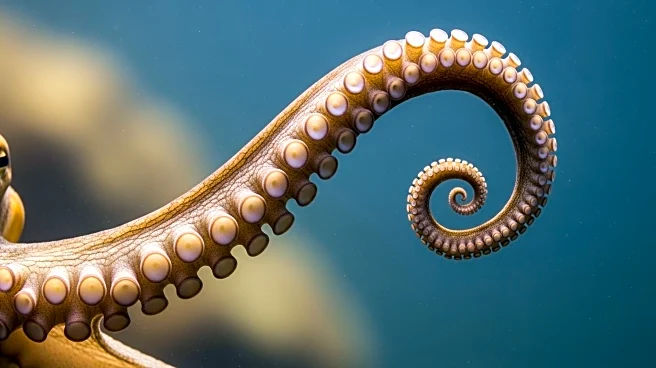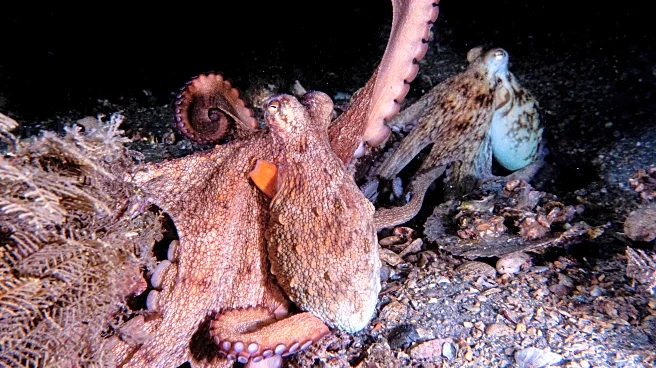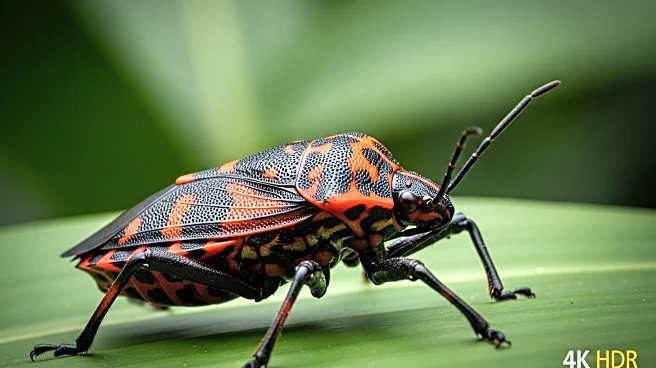What's Happening?
A new study published in Scientific Reports has revealed that octopuses tend to use their front limbs more frequently when exploring their environment. Researchers analyzed videos of wild octopuses engaging in various activities such as crawling, swimming, and fetching. The study found that octopuses used their four front arms about 60% of the time for exploration, while the back arms were primarily used for movement. This research, which involved three different octopus species, marks the first large-scale examination of octopus limb use in the wild, contrasting with previous laboratory-based studies that did not observe a preference for right or left arms.
Why It's Important?
The study provides new insights into the behavior and adaptability of octopuses, which are known for their complex limb functions. Understanding how octopuses use their limbs in natural settings can enhance our knowledge of their sensory and motor capabilities. This research could have implications for the study of other cephalopods and contribute to the development of biomimetic technologies, where robotic systems are designed to mimic the flexible and versatile movements of octopus limbs.
Beyond the Headlines
The findings highlight the remarkable adaptability and redundancy of octopus limbs, which can continue to function effectively even if one is lost to a predator. This study underscores the importance of studying animals in their natural habitats to gain a comprehensive understanding of their behaviors and ecological roles. The research also emphasizes the potential for interdisciplinary studies that combine biology, robotics, and engineering to innovate new technologies inspired by natural systems.












